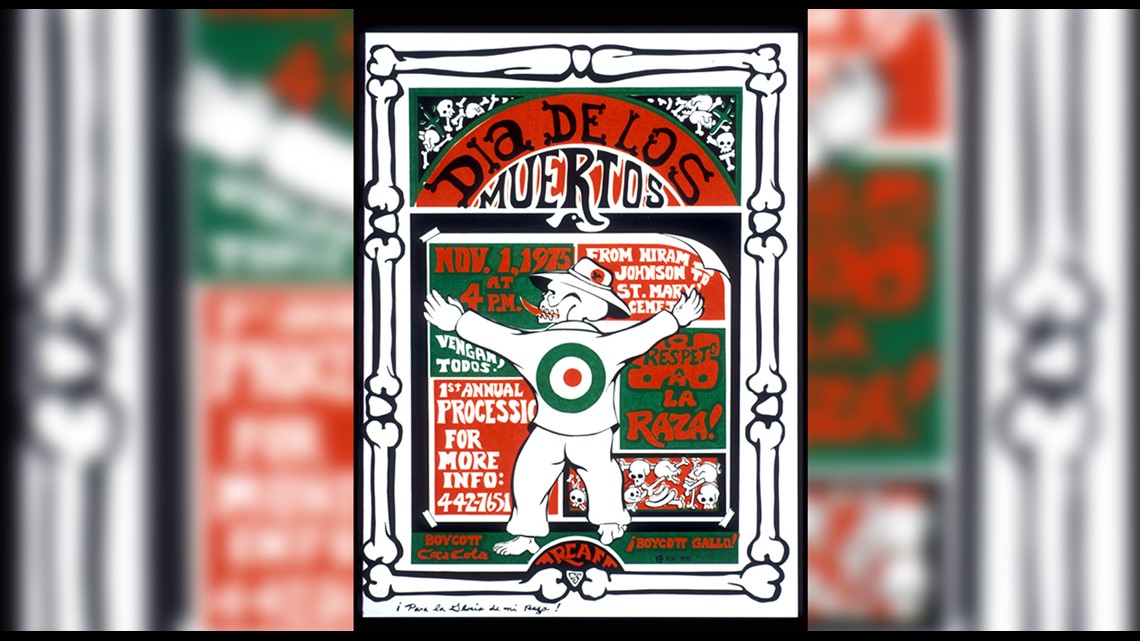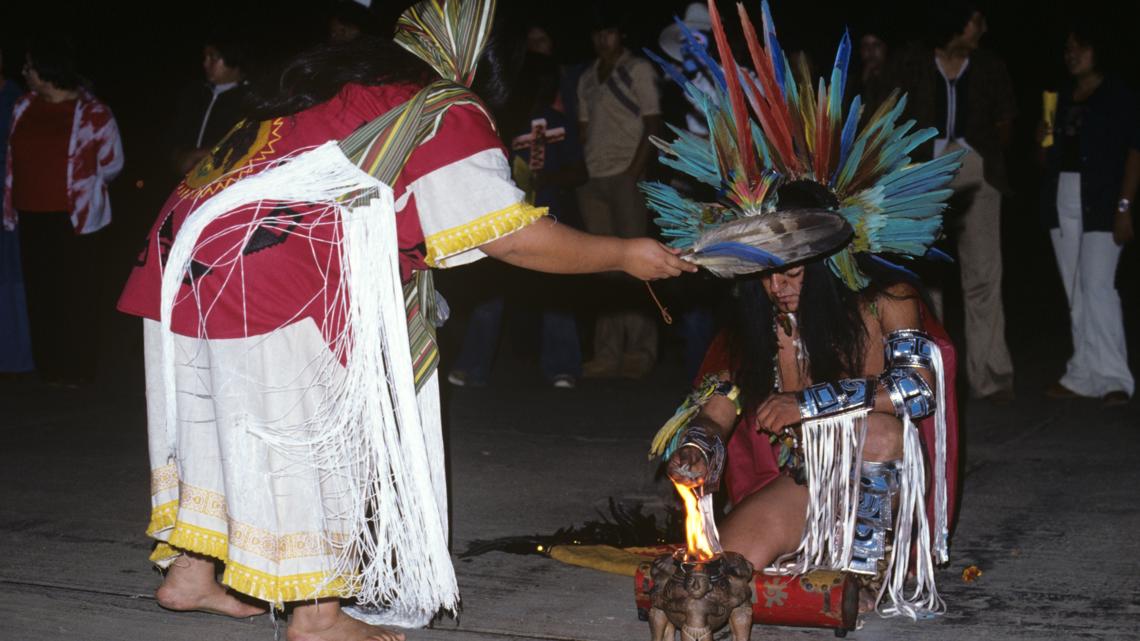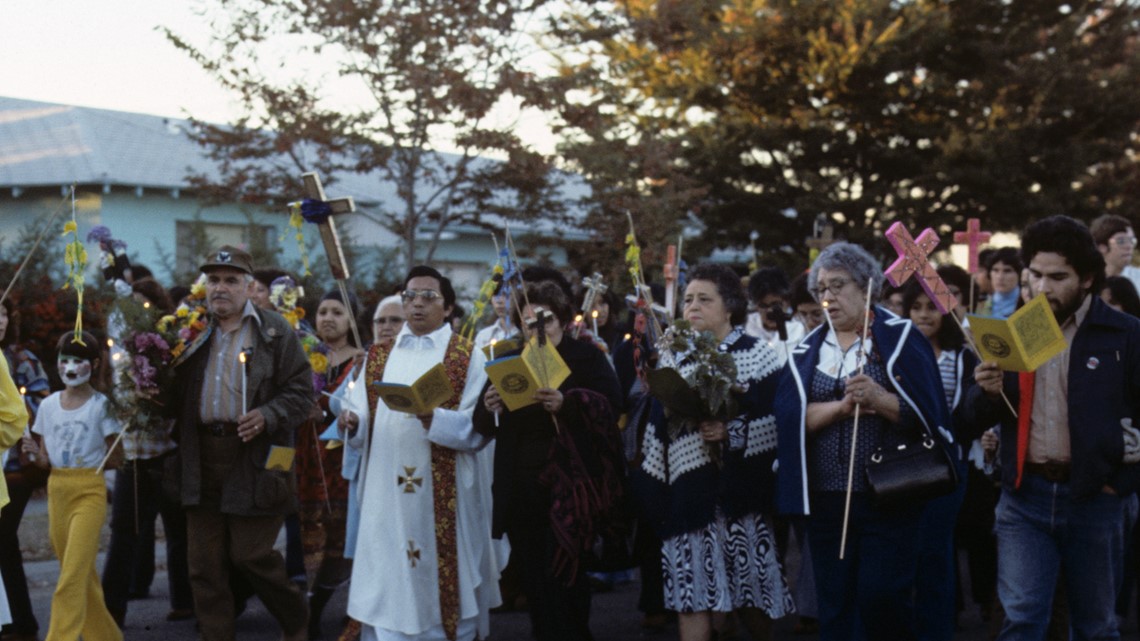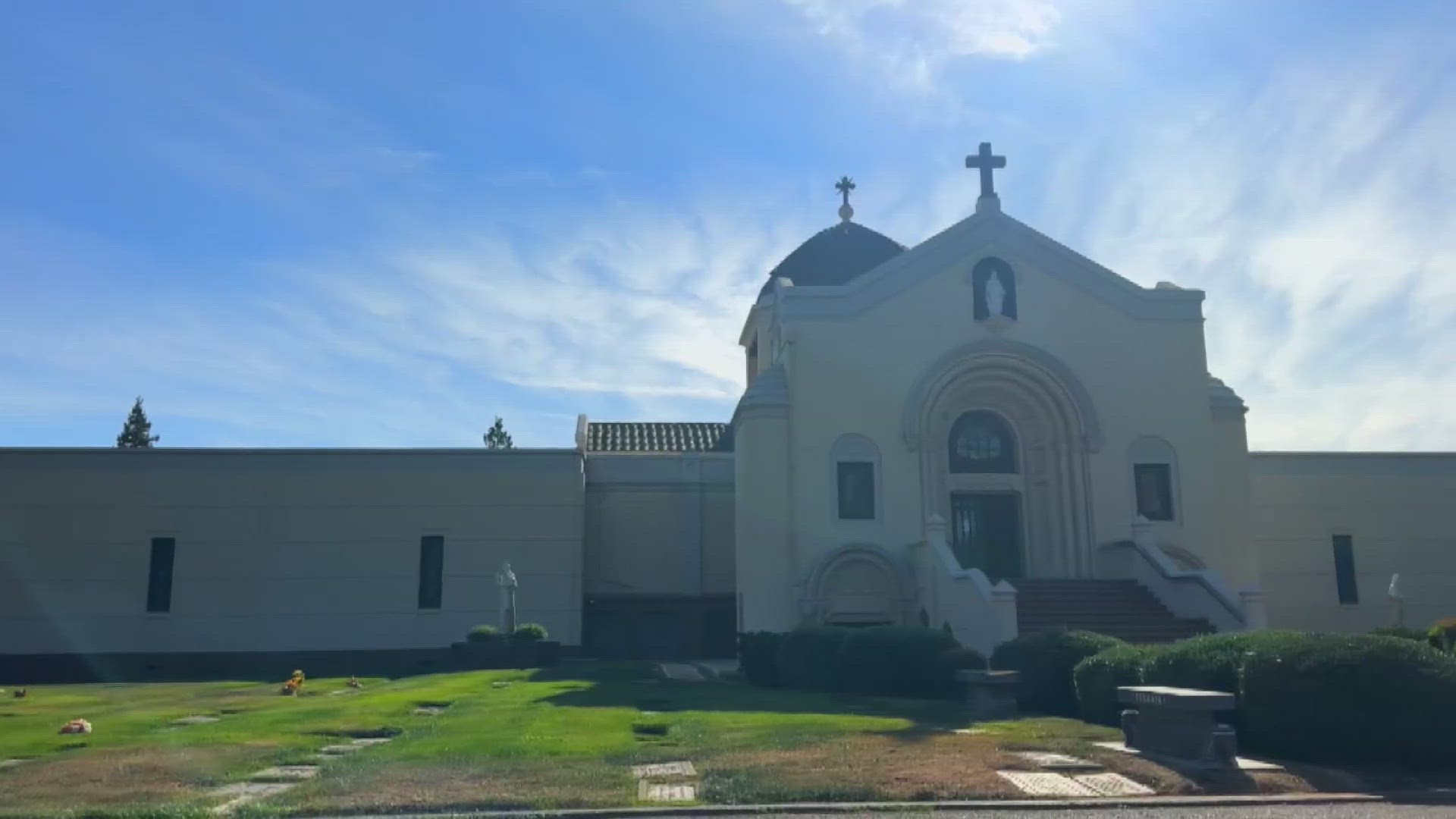SACRAMENTO, California —
“Stick to our cultura.” This is a phrase Lupe Portillo, a Sacramento altarista, or altar maker, would often hear from her grandma growing up. Passing down traditions, she taught a young Portillo how to build an ofrenda, or altar, a common custom in Mexican culture to honor loved ones who have passed on.
“Our time will end...” said Portillo. “But it’s great to have people here, family and friends, remember who you are, who you were, what you did, the laughter, the good times and the bad times that you all went through together.”
Many believe the ofrenda is a bridge between the living and the dead. This is especially important during Día de los Muertos, or the Day of the Dead. It's believed to be a guide for the spirits to cross over to the living world where they are treated as honored guests.
Carrying on her family’s cultural traditions, Portillo has built a community ofrenda for nearly 50 years at the oldest Día de los Muertos celebration in Sacramento.
She was part of a group of community members and organizations that brought Día de los Muertos to Sacramento in 1975 during the Chicano Movement.


Advocating en masse for political, social and economic equality for Mexican Americans, the Chicano Movement, also known as El Movimiento, started in 1965 and lasted until 1980. Sacramento residents played a large role in this civil rights movement.
“Historically, the larger Chicano Movement encouraged us to celebrate our Mexican, and especially our Indigenous, heritage as well as ignited a thirst for knowledge about our family roots and cultural traditions and art,” said Terecita Romo, an art historian, writer and former curator of the Mexican Museum in San Francisco who helps organize Sacramento’s oldest Dia de los Muertos event. “As a result of the larger civil rights movement, government funding was provided for the establishment of many community service organizations, including arts and culture orgs.”
The Royal Chicano Air Force (RCAF), a prominent collective of Sacramento-based artists and activists, and their organizations: the Centro de Artistas Chicanos, Breakfast for Niños Program, and La Raza Bookstore/La Raza Galeria Posada as well as the Washington Neighborhood Council, Washington Neighborhood Center, the Sacramento Concilio and Chicano elders were instrumental in the event’s creation.
They followed in the footsteps of the Self Help Graphics & Art in Los Angeles and the Galeria de la Raza in San Francisco, who were the first to celebrate Día de los Muertos as a public, participatory celebration in the United States starting in 1972.
"The way it's celebrated here in the United States is not a transplant of the way it's celebrated in Mexico,” said Romo.
Día de los Muertos is typically an intimate tradition in Mexico where families build ofrendas at home or visit the local cemetery where their loved one is buried to adorn the grave with flowers, food and personal memorabilia.
Sacramento’s Chicano leaders wanted to pay homage to the many ways Día de los Muertos is celebrated.
“We wanted to learn more about our history, looking back to pre-conquest times and Indigenous knowledge [and] practices, all the way to the contemporary time,” said Romo.
The tradition originated thousands of years ago from the rituals of the Olmecs, Toltecs, Mixtecs, Zapotecs, Maya, Nauhah and Aztecs and has since blended with the Catholic and Christian observances, All Saints Day and All Souls Day on Nov. 1 and 2.
The celebration includes a procession, an Indigenous ceremony with Azteca dancers and a Catholic mass.
They hold the event at St. Mary’s Cemetery in Sacramento because that’s where many Mexican and Chicano community members are buried, according to Romo, including her and Portillo’s families.
Many spiritual leaders have taken part including señora Angelbertha Cobb, also called “Mama Cobb,” a renowned master of Danza Azteca with a vast knowledge of the Dia de los Muertos celebrations in different regions of Mexico, and Arnaldo Solis, he oversaw the Sacramento Concilio called La Olotera, a mental health program that combined counseling and cultural activities and Catholic bishops who serve mass.


While Día de los Muertos is largely revered in the United States, that wasn’t always the case.
“We put the first Día de los Muertos on in Sacramento with a procession from Hiram Johnson High School to St. Mary’s Cemetery,” said Portillo. “We weren’t very welcomed through the neighborhood because they thought we were doing witchcraft.”
Now, the observance has become part of the cultural mainstream so much so different retail companies like Target sell Día de los Muertos-themed candles, sugar skulls and costumes. The increasing commercialization of Día de los Muertos is a concern for many Chicano leaders worried it reduces the original intent behind bringing Día de Los Muertos celebrations to the United States.
“[It was taking] something that was very Mexican, very much rooted in family, in heritage and continuity and bringing it to a contemporary Chicano reality” said Romo. “Being that there were Chicanos who had been here generations who didn't speak Spanish, didn't really see a connection to Mexico other than maybe a surname or relatives that would come to visit and this was a way to do it, because it had all these different layers that people could connect to.”
Romo hopes the event will continue to celebrate the cycle of life and death by recognizing those that are gone but never forgotten.


This year’s procession will take place at St. Mary’s Cemetery in the afternoon where attendees will walk all four directions — North, East, South, West — of the facility to acknowledge the women, children, elders and veterans who’ve passed on. This will be followed by a ceremony by Danza Azteca at 1:30 p.m. and a Catholic mass at 3 p.m.
After mass, pan de muerto — a traditional Mexican pan dulce made as an offering during the Day of the Dead — will be given out, which is blessed by the priest.
The community ofrenda will be up throughout the event, and the public is encouraged to place pictures of their loved ones there. The altar is lined with vibrant marigolds, colorful skulls, candles, food, drinks, and over 500 pictures of deceased loved ones that Portillo has collected since the event first started. She chuckled thinking about what her grandma would say.
“She'd be very happy to see how big that little altar has grown,” said Portillo. “People are very generous, and they love it. They bring their loved ones and I think my grandma would be proud of seeing how everybody cooperates and participates in this ceremony.”
As the holiday evolves across the country, local leaders from the Chicano movement continue to come together to provide a unique celebration to the Sacramento community, a memento of the Chicano Movement.
The 48th annual Día de los Muertos event is Thursday, Nov. 2 at the St. Mary’s Catholic Cemetery, located on 6509 Fruitridge Road in Sacramento, from 12-6 p.m. It’s free and open to the public.
We want to hear from you!
The Race and Culture team's mission is to serve our diverse communities through authentic representation, community engagement and equitable reporting. Accomplishing our goals of inclusive reporting requires hearing from you. Is there a person or place that you want us to highlight? Email us at raceandculture@abc10.com or fill out the form below.

